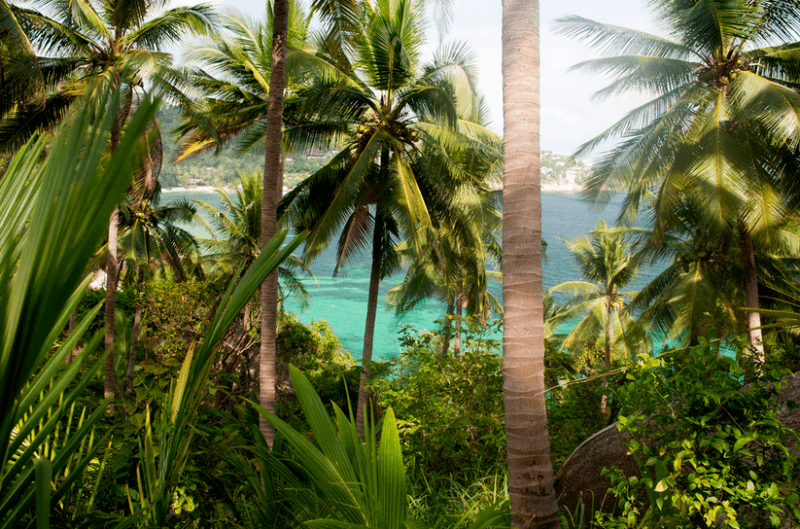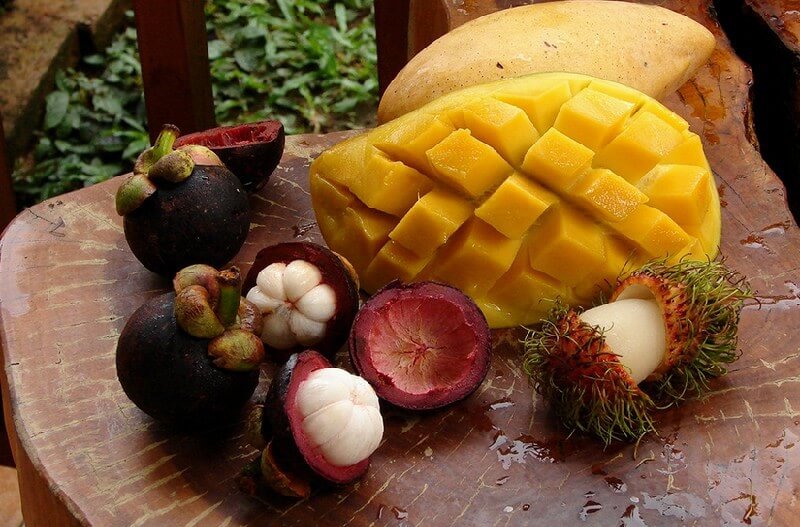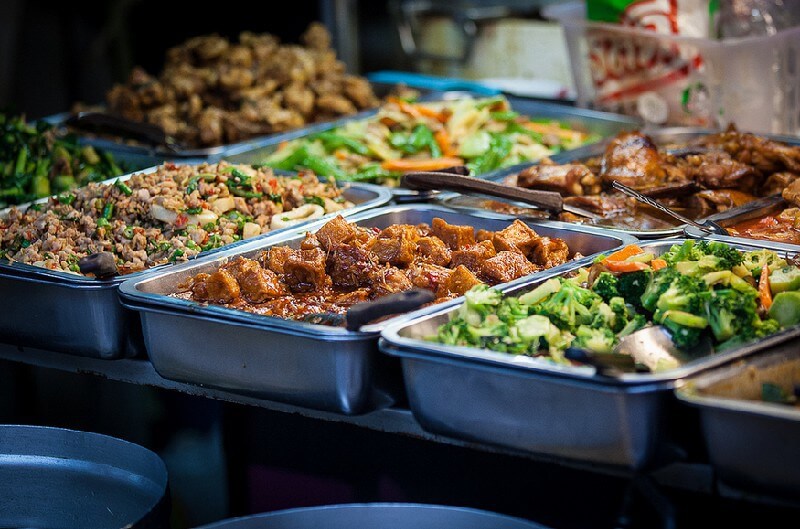Thailand's nature and wildlife
Rating: 9,2/10 (4385 votes)  Thailand is considered the land of the rainforest. Jungle occupies two thirds of the total area of the city. Mostly deciduous trees of valuable species grow here. For example, bamboo, mahogany and sal. Locals extract tree resin, balsam, gum and varnish. Thai food - gifts of nature: mangosteen, duryan, bananas and other vegetables and fruits.  Fruits of Thailand In the agricultural industry, palm trees occupy the leading place: coconut and sago. The fruits are edible, and the rest of the tree is used by the locals to build houses and pens. Teak wood is used to build ships. Wood is unique in its properties - it is practically not subject to decay and has increased strength. Pine and oak groves grow on the top of the mountains. During the period of monsoon rains, ficuses, pandanuses and palms grow by tens of centimeters, so the thickets in these places are always dense. If we compare an abandoned village with ancient ruins, then after a year it is already difficult to understand what and where it was. But what do we know about the inhabitants of that very tropical jungle? Consider the most famous representatives of Thailand's diverse fauna. MammalsThe official 'animal' symbol of Thailand Indian elephant once inhabited almost the entire territory of the country, but with the development of civilization, huge animals began to be exterminated in incredible numbers. Now, in the wild, elephants inhabit only the peninsular part of Central Thailand and the southeast coast.  Indian elephant Numerous primates in Thailand are ubiquitous, as on the mainland , and on the island part of the kingdom. Western Thailand this is the habitat of several species of macaques, including rhesus monkeys, langurs live on the peninsular part, but gibbons can be found literally everywhere. The undisputed master of the Thai jungle is Indian tiger. They live in the northern regions of the country, where foothills and dense forests have long become a reliable shelter for them from the most terrible enemy human. In the same areas you can also find leopards, including panthers. Evergreen forests and mangrove swamps of Western Thailand it is the homeland of the civet a rare medium-sized cat, which is also called a fishing cat. A jungle cat can be seen in the same region.  Jungle cat A unique representative of the fauna of Indochina tapir in Thailand is included in the list of specially protected animals. You can see him in the wild only near the border with Malaysia. The hero of Thai folk tales deer the national symbol of cunning and trickery, akin to the European fox. These small shy animals live in the southeastern part of the kingdom, sometimes migrating to the central regions. In the dense jungle, you can also meet Binturong or the famous Thai bear cat. He will not approach a man in the wild, but in zoos they are allowed to be fed by hand.  The most common bird species in Thailand are the lainas, a starling family. These talkative birds live everywhere from the northern foothills to the southern provinces of the kingdom. They are especially known as symbionts of buffaloes flocks of birds can sit for hours on the animal's back, eating ticks.  Mine Frequent inhabitant of Thai forests wild chickens. They have little in common with their domestic counterparts, except that the characteristic clucking. In the peninsular part of Thailand there are pheasants. peacocks also live in these regions, but shy birds in the wild rarely show people their bright plumage, most often hiding in the thickets at the first danger. The peninsular part of Thailand is also home to hornbills some of the most popular inhabitants of local zoos. In captivity, they are very friendly, but in the wild, due to lack of food, they often become dangerous predators.  Hornbill Swifts in Thailand have chosen the coastal cliffs of the peninsular regions and some southern islands. They live there in huge numbers, and during the nesting period you can observe them in the immediate vicinity. Important: Swift one of the few birds in Thailand allowed to hunt. Swift meat, as well as their eggs, are considered a delicacy here, but an expensive license is required to legally catch a swift or assemble a nest. Reptiles and insectsAccording to the latest data, there are about 175 species of snakes in Thailand, 13 of which poisonous. The king cobra living in the lowlands of Central Thailand is of particular danger to humans. An adult can reach 2.5 meters in length, and its bite, if assistance is not provided immediately, is fatal.  King Cobra Another dangerous snake in Thailand is the Malay snake and chain viper. Both snakes rarely attack first, but in case of a bite, the limb quickly swells, and the place where the poison enters begins to die off, leaving behind ugly scars. You should also beware of keffiye in Thailand, they live in trees, perfectly camouflaging in foliage. This snake's bite is not fatal but extremely painful due to the composition of the venom. Important: If you are bitten by any tropical snake, you should immediately call for help. Thai paramedics always carry with them a serum designed to neutralize the effects of any poison, including the poison of a cobra. In the northern forests of Thailand, some insects should be wary of, in particular centipedes. They live in shady jungles, often under large boulders, in caves, or on the shady side of wide trees. All species are dangerous for humans, since their poison contains hydrocyanic acid, which has a neuroparalytic effect. Thai paramedics always carry with them a serum designed to neutralize the effects of any poison, including the poison of a cobra. We also recommend reading The most delicious fruit in Thailand. What fruit to try in Thailand Topic: Thailand's nature and wildlife. |




